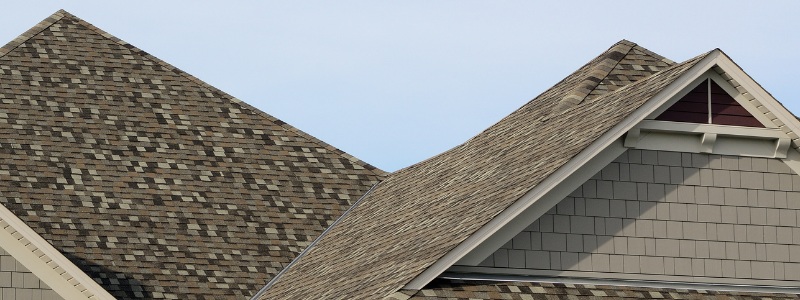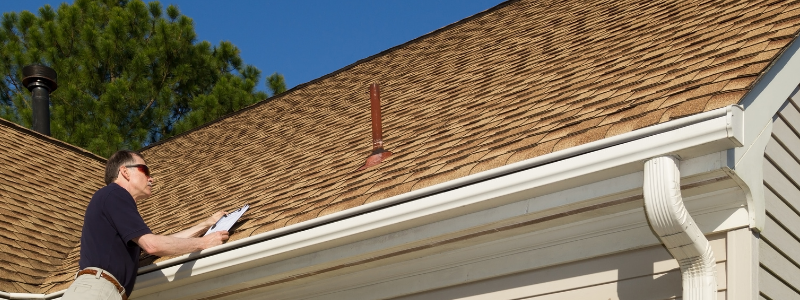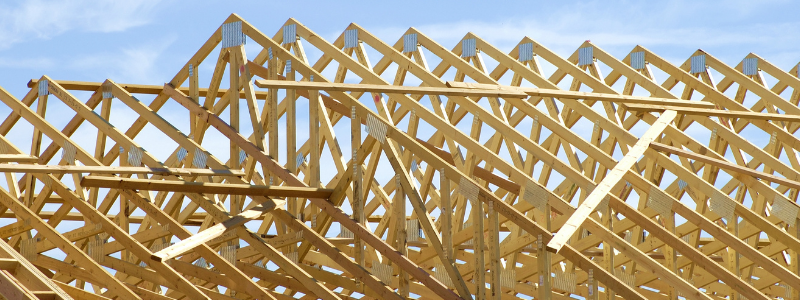
Hip Roof vs Gable Roof
Whether we’re talking about a commercial or residential roof, there is a wide variety of roofing styles and materials. Some of the most common styles of roofs are hip roofs and gable roofs. But what are the differences? What are the pros and cons? Here we compare and contrast a hip roof vs gable roof.

What is a Hip Roof?
A hip roof or hipped roof has all sides slope downwards to the walls. Usually, the pitch is gentle.
Popularity
Hip roofs are a favorite North American roof style. Home and business owners like the hip roof because it has a clean, modern look and it is very durable.
Cost
Hip roofs generally cost more than gable roofs. The design is more complex and uses more materials.
The average cost of a hip roof is between $20,000 and $50,000. Variations depend on the slope, material, pitch, and roof area. Typical costs are between $8 and $12 a square foot.
Advantages of a Hip Roof
When comparing the advantages of a hip roof vs gable roof, hip roofs are more stable than gable roofs. The inward slope of all four sides is what makes it sturdier and more durable. This is a definite advantage in climate extremes. Hip roofs are excellent for both high wind and snowy areas. The slant of the roof allows snow to slide off easily leaving no standing water.
Hip roofs offer the option of extra living space. You can add another story by installing dormers or crow’s nests.
Hip roofs can be built in variations including:
- Simple hip: Also known as a square hip roof, the simple hip is the most common type of hip roof. It has a polygon on two sides and a triangle on two other sides. The sides come together at the top to form a simple ridge.
- Pyramid hip: Also a simple hip roof design, the pyramid hip is so named because it looks like a pyramid. There is a single peak at the top. A common example is a pyramid roof atop a gazebo. This is also called a pavilion roof.
- Cross hipped: Similar to a cross gable roof, this design is often used on homes with different wings. The line where the two roofs meet is called a valley.
- Mansard roof: On a mansard roof, each side of the roof has two slopes with the bottom slope steeper than the top slope.
- Combination roof: This design is similar to the mansard roof except that it flares at the bottom completely around the roof. The lower level of the roof is at a much lower pitch.
- Jerkinhead roof: Also known as a half-hipped roof, this design has two sides shortened.
Downsides to a Hip Roof
Hip roofs are more expensive to build than gable roofs.
The hip roof is a more complex design that requires more building materials and labor. If dormers are added, this creates seams and valleys. These must be carefully sealed and checked or they may pose a problem with rainwater accumulation and leaks.
The flashing on the end walls of the dormers must be properly and securely installed.

What is a Gable Roof?
The gable roof is shaped like an A. Also known as pitched or peaked roof, the gable roof is characterized by its triangular shape at the end. This is known as a gable.
Popularity
Gable roofs are one of the most popular types in many American communities. They are seen on New England and east coast Canada homes. Famous examples include Nathaniel Hawthorne’s The House of Seven Gables and Lucy Maud Montgomery’s Anne of Green Gables settings.
Cost
The average cost to build a gable porch roof is between $16 and $30 a square foot. If the slope is higher or the home or business has an unusual layout, costs may increase.
Advantages of a Gable Roof
If you live in an area that gets lots of rain or snow, gable roofs are excellent for shedding moisture so leaks do not occur.
The attic or vaulted ceiling space creates better ventilation. This decreases condensation, mold, or mildew.
Gable roof’s simple design makes it less expensive and labor-intensive than many other roof designs.
Gable roofs can be constructed in a variety of designs including:
- Side gable: two equal panels or pitched sides at an angle.
- Crossed gable: two gable roof sections meet at the right angle. Crossed gable is often used in Cape Cod and Tudor houses.
- Front gable roof: at the entrance of the house. This is often used in Colonial style homes.
- Dutch gable: a mix of gable and hip roof. The gable roof sits atop a hip roof.
- Gambrel: This is a gable version of the mansard roof. Gambrel roofs are popular on barns.
- Saltbox: This roof design is found in many colonial-style homes. It features an open gable roof. One end extends farther than the other. This results in an asymmetrical roof. More space is thus created.
Disadvantages of a Gable Roof
If you live in an area where high winds or hurricanes are likely, a gable roof may not be the best choice. Gable roofs must be carefully constructed with good support or the roof may collapse in high winds. Strong winds may also peel roofing materials away from gable roofs. The overhang can also allow winds to create an uplift which will detach the roof from the walls.

Hip Roof vs Gable Roof
Both types of roofs have pros and cons. In making a decision, consider things like curb appeal, cost, and weather challenges.
A hip roof is slightly more costly than a gable roof. That is because the design requires more roofing materials. The design also means that there is more waste due to cutting for the angles and ridges on a hip roof. However, a hip roof is easier to build than a gable roof so the labor costs will be lower.
If you want to make use of the attic space for extra bedrooms or office space, a hip roof allows you to add dormers.
Gable roofs offer better ventilation. This may result in less condensation and less likelihood of mold or mildew.
Hip roof designs may offer some insurance benefits in some cases.
When it comes to wind performance, the hip roof is superior to the gable roof. However, in snowy areas, the gable roof is steep enough to allow snow to slide off where snow builds up on a hip roof.
Why Choose B & M Roofing?
Regardless of the roof design you choose, regular roof system maintenance is critical to the longevity of your roof. Choosing an experienced roof inspection, repair, and replacement specialist who knows the weather conditions of your area will ensure the health of your roof.
With seventy-five years of successful roof maintenance in Colorado, B & M Roofing has a proud record of meticulous service.
For more information about roof maintenance, repair, and replacement on your Colorado home or business or to inquire about a free estimate, call 303-816-0068 or fill out a contact form.




































